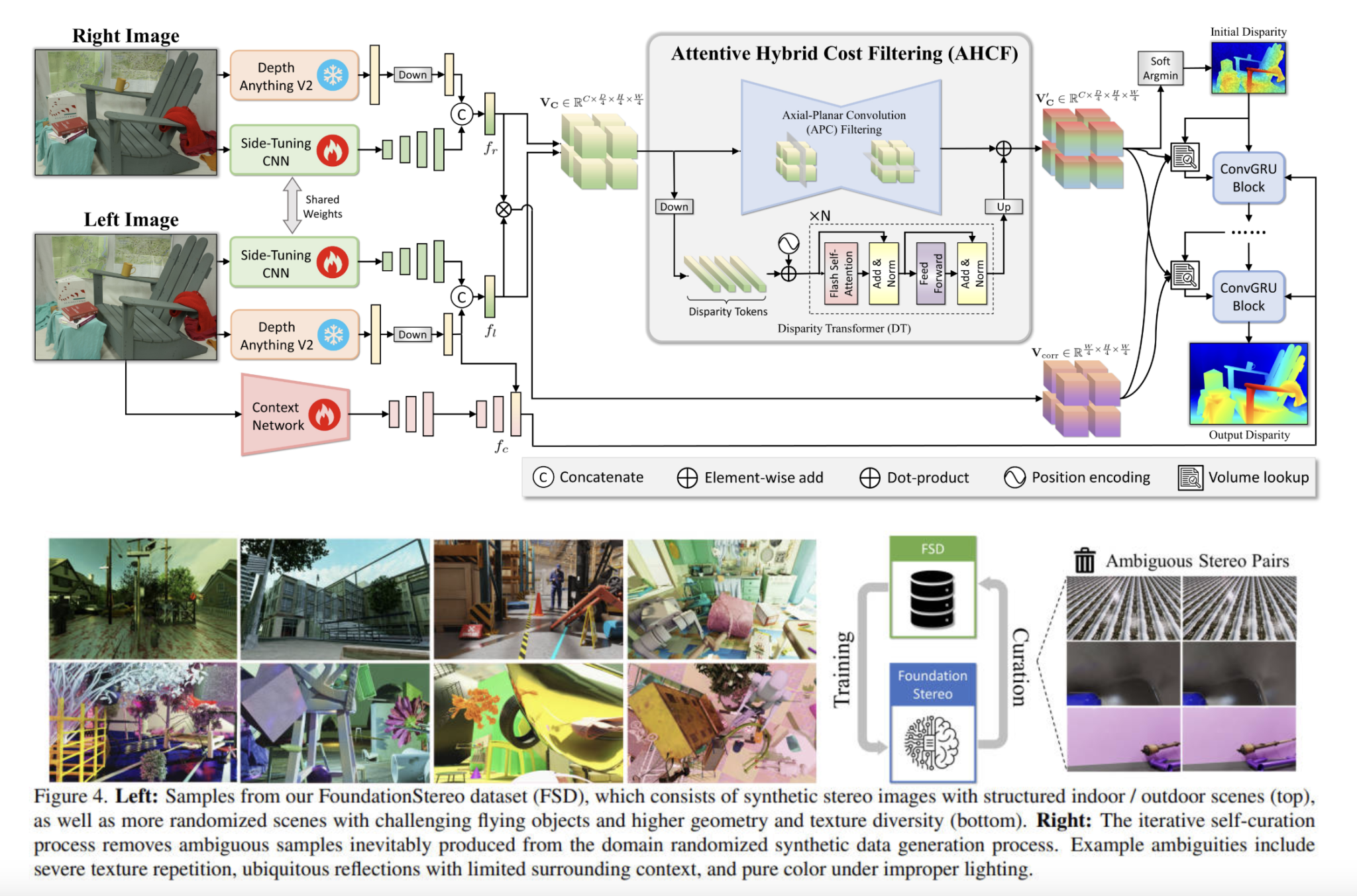
Stereo Depth Estimation: A Key to Advanced Technologies
Stereo depth estimation is essential in computer vision, enabling machines to determine depth from two images. This technology is crucial for fields such as autonomous driving, robotics, and augmented reality. However, many stereo-matching models require specific adjustments to perform accurately in different environments.
Challenges in Stereo Depth Estimation
A significant issue in stereo depth estimation is the gap between training data and real-world applications. Current models often rely on limited datasets that do not reflect the complexities of natural environments. This results in high performance in controlled settings but poor results in varied scenarios. Additionally, fine-tuning these models for new environments is often costly and impractical for real-time use. A more robust solution is needed to eliminate the need for domain-specific training.
Traditional Methods and Their Limitations
Conventional stereo depth estimation techniques build cost volumes to represent disparities between image pairs. While 3D convolutional neural networks (CNNs) are used for filtering, they struggle to generalize beyond their training data. Iterative refinement methods aim to improve accuracy but can be computationally intensive. Recent approaches using transformer architectures face challenges in efficiently managing the disparity search space.
Introducing FoundationStereo
Researchers at NVIDIA have developed FoundationStereo, a foundation model that addresses these challenges and achieves strong zero-shot generalization. This model was trained on a large synthetic dataset of one million stereo-image pairs, ensuring high quality and diversity. An automated self-curation process filtered out ambiguous samples, enhancing the training data quality. The model also features a side-tuning backbone that incorporates monocular priors from existing vision models, bridging the gap between synthetic and real-world data.
Innovative Methodology
FoundationStereo’s methodology includes several key components. The Attentive Hybrid Cost Volume (AHCF) module improves disparity estimation by combining 3D Axial-Planar Convolution with a Disparity Transformer. This approach refines cost volume filtering and enhances feature aggregation. The Disparity Transformer enables long-range context reasoning, effectively processing complex depth structures. Additionally, the hybrid integration of CNNs and Vision Transformers (ViT) allows for better adaptation of monocular depth priors into the stereo framework.
Performance Evaluation
FoundationStereo has demonstrated superior performance compared to existing methods. It was tested on various datasets, including Middlebury, KITTI, and ETH3D, showcasing its zero-shot generalization capabilities. For example, on the Middlebury dataset, it achieved a BP-2 error of 4.4%, outperforming previous models. On ETH3D, it recorded a BP-1 error of 1.1%, and in KITTI-15, a D1 error rate of 2.3%. These results highlight FoundationStereo’s effectiveness in handling challenging scenarios, such as reflections and complex lighting conditions.
Conclusion
This research marks a significant advancement in stereo depth estimation by addressing generalization challenges and improving computational efficiency. By utilizing a large-scale synthetic dataset and innovative techniques, FoundationStereo eliminates the need for domain-specific training while maintaining high accuracy across diverse environments. This methodology sets a new standard for zero-shot stereo-matching models, paving the way for broader real-world applications.
Explore Further
Check out the Paper and GitHub Page. All credit for this research goes to the project researchers. Follow us on Twitter and join our 80k+ ML SubReddit.
Transform Your Business with AI
Explore how artificial intelligence can enhance your operations:
- Identify processes that can be automated.
- Pinpoint customer interactions where AI adds value.
- Establish key performance indicators (KPIs) to measure AI impact.
- Select customizable tools that align with your objectives.
- Start small, gather data, and gradually expand AI use.
If you need guidance on managing AI in business, contact us at hello@itinai.ru or reach out on Telegram, X, or LinkedIn.



























